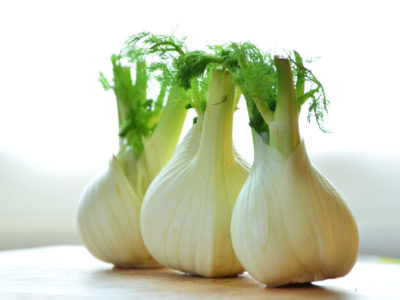This herb is a flowering plant species that is actually a close cousin to carrots, dill, coriander, and other members of the apiaceae family. If you’ve ever grown fennel, you know that the entire plant is very aromatic! Fennel is native to southern Europe, and it has been a popular herb for medical and culinary uses since at least the Greek era. The vegetable component of fennel is often considered “Florence fennel” or “finocchio;” this is the bulb-like stem base that is sold separately from the aromatic leaves, which are generally used as herbs or garnishes. You can also use dried fennel seed as a spice! I just love how versatile this plant is (but it’s important to note that fennel seed is not appropriate on AIP; I noted some details around this in my blog post, Spices on the Autoimmune Protocol). I have used fennel in multiple ways in my recipes, like as a main ingredient in my Shrimp, Avocado, Mango, and Fennel Salad (as a vegetable) or my Baked Fresh Ham (as a seasoning).
Fresh fennel bulb is an AMAZING source of nutrition, especially of minerals. 100g of this root holds 310% RDV of manganese, 142% RDV of iron, 120% RDV of calcium, and 108% RDV of magnesium!!! It is also very rich in phosphorus (70%), zinc(42%), and potassium(36%). It is also an excellent source of B vitamins (30% or more of your RDV of B1, B2, B3, and B6) as well as vitamin C. Conversely, fennel seed would not be used for its nutritional content, simply because spice doses are just so low.
Since fennel is grown nearly worldwide, you might be able to catch some at your local farmers’ market during the summer! If not, you can find the bulbs, leaves, and/or seeds at your grocery store.


 Blackstrap Molasses
Blackstrap Molasses